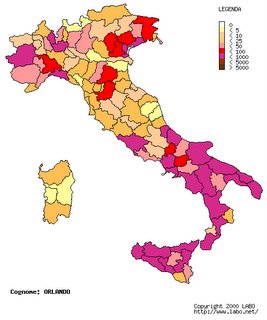The discussion was about organising genealogical research, which was triggered by a blog post written by Sharon who blogs at Gathering Dust and I shared, probably somewhat badly what I do with my research. You can read Sharon's post HERE
Pauleen Cass shared her thoughts via her blog and I thought I would explain further what I do.
Firstly, let me explain that I began researching before the internet existed as we know it. I gathered research by visiting archives and using the postal service.
I also have a family history where my maternal line has lived within the parimeters of three Counties in England - Surrey, Sussex and Hampshire for around 300 years. It is therefore not too surprising that I have some surnames that occur more than once and several lines that cross over through intermarriage.
I also have the added complication that my husband's surname does on occasions become Goacher instead of Goucher and I have Goacher's in my maternal line. There does not appear to be any connection between my Goachers to my husband's family but.......
- My genealogical software program, I use Roots Magic contains a file called "Main File"
- I have a physical folders called Main File (JDG) for my maternal ancestry and
- I have a digital folder called Main File (JDG)
- I have a physical folder called Main File (SPG) for my husband's ancestry and
- I have a digital folder called Main File (SPG)
- I also have two filing cabinets which hold suspension files such as shown in the picture here. I have a file for each surname where the material does not (or does not currently) provide a link to my own ancestry.
.JPG)
- I also have three drawers and a digital files of material relating to my three One Place Studies
I also have numerous papers and digital files that relate to other places where my ancestors lived such as
- Geelong Victoria
- Wonersh Surrey
- Wagga Wagga NSW
- Guildford Surrey in general
There is also my trusty set of Index Cards which I talked about here. I have scanned them, and I have the original cards, or at least I have at the moment. In addition I have every notebook and journal I have kept, all the way back to 1982. I always keep the first two pages free as my index and index as I go along.
One-Name Study or Surname Research
The Orlando study currently sits at approximately 50,000 entries on a mixture of digital and paper. My plan is to put all the material online with the appropriate source material. I have a website and a blog and as I gradually add the material I add the details to the master index which is located in Google Drive and is available for everyone to see.
The same will be carried out for the Worship One-Name Study, although that has around 10,000 references.
When I work on family reconstructions for my these two surnames and for my Puttenham One Place Study I use Legacy, inspired by the +Legacy Virtual Users' Group Community.
Excel
I keep a track of all the material I have and where it is located. For this I use Excel. I also use Excel for my One Place Studies - index of parish records and in the case of my road study * I track the houses by number order. Each item recorded as a separate event. I can then filter by name or by property.
At the beginning of EVERY spread sheet I have a methodology sheet. Here I advise what the material is and how it is kept.
Final Words
I am sure that my organising way seems complex to some. That is probably due to the mix of written and digital files. I am gradually scanning and archiving my paper mountain but to process research that nearly spans three decades it could take another three quite easily!
In essence my work is broken down into segments
- My own family
- My specific studies - Surnames / Places / items
- Other material that does not fit and perhaps never will!
For each of those there is digital and paper and gradually it will all be digital with the exception of my own family. I rather like having that in the files and every now and again I glance through it.
I use Evernote as a premium user and have an electronic inbox notebook where I collate material until it is processed or sorted. The Orlando Evernote folder currently sits at 212 entries and at some point they will be processed into the digital structure, added to the master index and master index. The original Evernote item will move from the Orlando folder to the Archive folder where I won't see it again unless I search for that specific item or it appears in search results.
I also use One-Note and whilst I originally love it, I have found in the last year or so that I prefer Evernote. I still have access to my One-Note files and over time will transfer them to Evernote. I have written blog posts about One-Note and Evernote and have shared the various links below.
The bottom line is there is NO right or wrong way to created and organise genealogical and historical material - there is only YOUR way! Do what feels right to you and make sure you write instructions for how the material is laid out.
Further Posts of Interest
- Index Cards (13th March 2012)
- Developing a digital organisation scheme (14th January 2012)
- Evernote and Saving Emails (19th November 2013)
- More on Evernote (20th November 2013)
- Embracing One-Note (24th September 2013)
- More on One-Note (13th May 2014)
- Talking and Playing with Evernote (6th March 2014)
- One-Note >> Evernote (10th September 2014)
- Evernote Genealogy Community
- Evernote Unofficial Community
- Evernote Genealogists on Face Book


.JPG)



